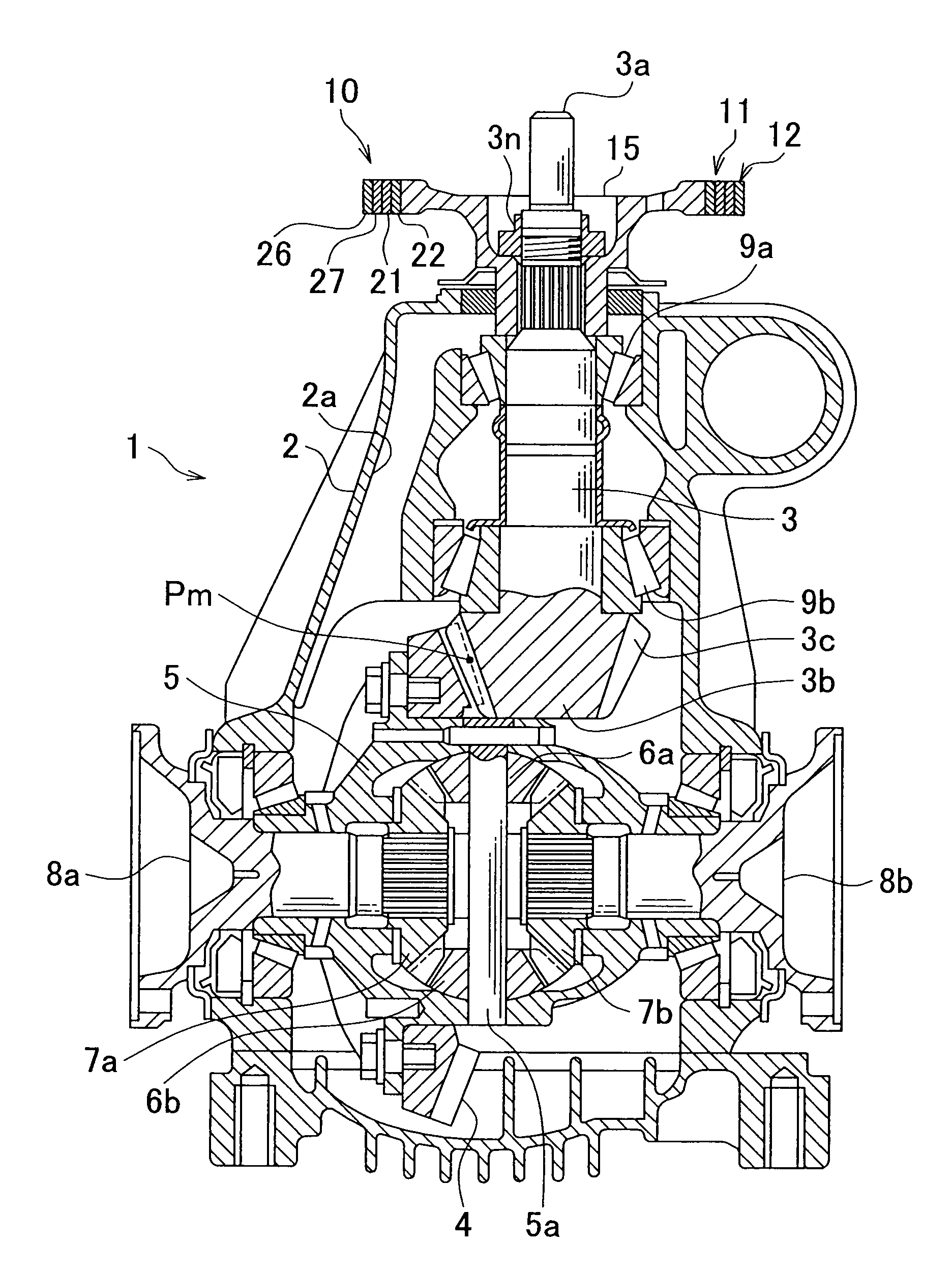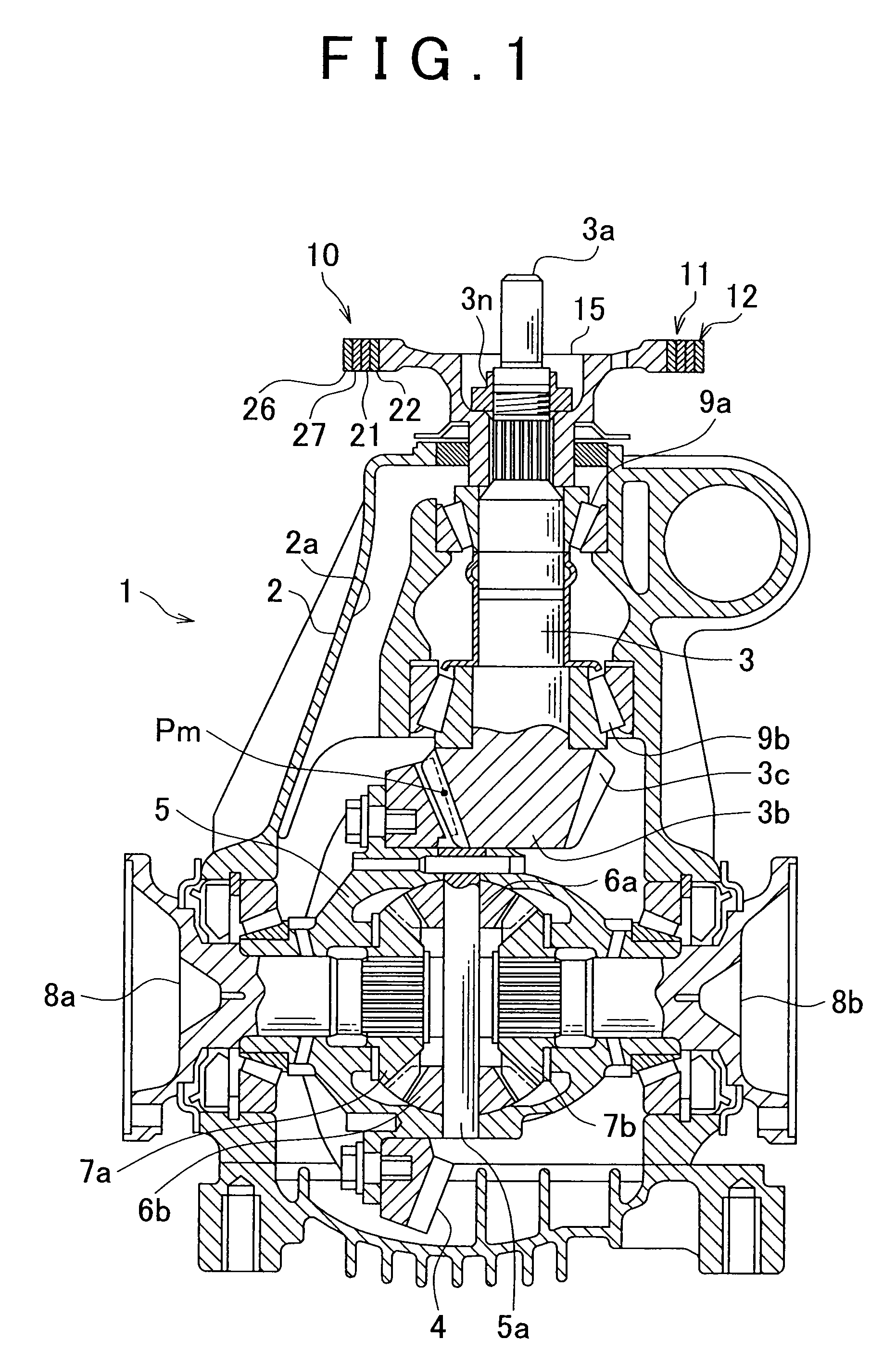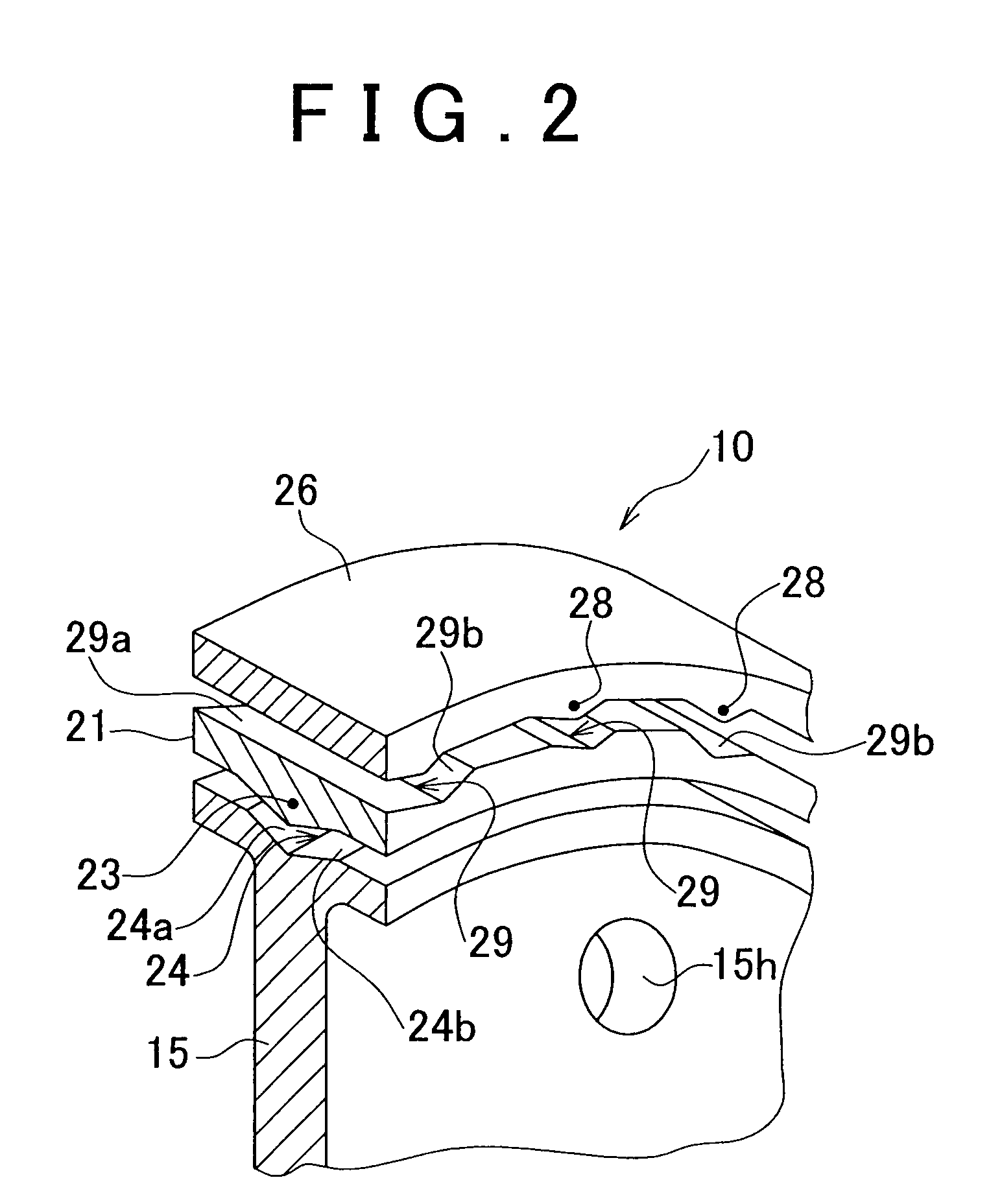Damper device
a damper device and damper technology, applied in the direction of shock absorbers, mechanical devices, gearing, etc., can solve the problems of large difference, difficult suppression of vibration noise, resonance of rear-differential units at the rotation input portion of the rotation input portion, etc., to achieve the effect of reducing vibration nois
- Summary
- Abstract
- Description
- Claims
- Application Information
AI Technical Summary
Benefits of technology
Problems solved by technology
Method used
Image
Examples
first example embodiment
[0044]FIG. 1 is a cross-sectional side view of a drive-force transfer unit incorporating a damper device 10 according to the first example embodiment of the invention. FIG. 2 is a cross-sectional perspective view of a portion of the damper device 10. FIG. 3 is an enlarged cross-sectional side view of a portion of the damper device 10. FIG. 4 is an enlarged front view of a portion of the damper device 10. The damper device 10 is incorporated in a rear differential unit mounted in a rear-drive vehicle.
[0045]First, the structure of the damper device 10 will be described.
[0046]Referring to FIG. 1, the damper device 10 has torsional dampers 11, 12 having different characteristics. The torsional dampers 11, 12 are stacked on top of each other in a radial direction of the damper device 10. The torsional dampers 11, 12 are concentrically supported on a companion flange 15 that is a rotational element and rotates about the center axis of the damper device 10.
[0047]The companion flange 15 is ...
second example embodiment
[0074]FIG. 9 is an enlarged cross-sectional perspective view of a portion of a damper device 30 according to the second example embodiment of the invention, and FIG. 10 is an enlarged cross-sectional side view of a portion of the damper device 30, and FIG. 11 is a cross-sectional front view of a portion of the damper device 30. Like the above-described damper device 10 of the first example embodiment, the damper device 30 of the second example embodiment is provided at the input portion of a rear differential unit for rear-drive vehicles, and therefore the portions and parts of the damper device 30 of the second example embodiment that are identical to those of the damper device 10 of the first example embodiment are not identified in FIG. 9 to FIG. 11, and they are denoted, in the following description, by the same reference numerals as those used in the foregoing description on the first example embodiment.
[0075]Referring to FIG. 10, the damper device 30 has torsional dampers 31, ...
third example embodiment
[0088]FIG. 12 is an enlarged cross-sectional perspective view of a damper device 50 according to the third example embodiment of the invention.
[0089]Like the damper device 10 of the first example embodiment, the damper device 50 of the third example embodiment is provided at the input portion of a rear differential unit for rear-drive vehicles, and therefore the portions and parts of the damper device 50 that are identical to those of the damper device 10 of the first example embodiment are not identified in FIG. 12 and they are denoted, in the following description, by the same reference numerals as those used in the foregoing description on the first example embodiment.
[0090]Referring to FIG. 12, the damper device 50 of the third example embodiment has a torsional damper 51 having a first characteristic that enables the longitudinal prying resonance frequency, or the like, of the torsional damper 51 to be adjusted as needed while maintaining the torsional resonance frequency of th...
PUM
| Property | Measurement | Unit |
|---|---|---|
| resonance frequency | aaaaa | aaaaa |
| resonance frequency | aaaaa | aaaaa |
| mass | aaaaa | aaaaa |
Abstract
Description
Claims
Application Information
 Login to View More
Login to View More - R&D
- Intellectual Property
- Life Sciences
- Materials
- Tech Scout
- Unparalleled Data Quality
- Higher Quality Content
- 60% Fewer Hallucinations
Browse by: Latest US Patents, China's latest patents, Technical Efficacy Thesaurus, Application Domain, Technology Topic, Popular Technical Reports.
© 2025 PatSnap. All rights reserved.Legal|Privacy policy|Modern Slavery Act Transparency Statement|Sitemap|About US| Contact US: help@patsnap.com



